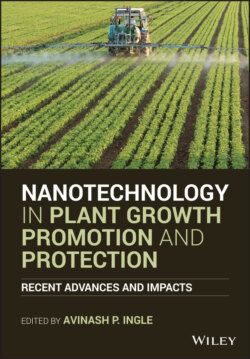Читать книгу Nanotechnology in Plant Growth Promotion and Protection - Группа авторов - Страница 28
1.3.4 Nano‐Antivirals
ОглавлениеMetal nanoparticles such as Ag, Cu, ZnO, and TiO2 have been studied for their antiviral properties (Kim et al. 2018). Foliar application of silver nanoparticles on bean leaves caused complete suppression of sun‐hemp rosette virus (Jain and Kothari 2014). In another study, Elbeshehy et al. (2015) have shown that Vicia faba plants treated with the bean's yellow mosaic virus and sprayed with silver nanoparticles have achieved surprisingly better results 24 hours after infection compared with spray applications before or at the time of inoculation. Nanofertilizers which contained TiO2 nanoparticles were found to cause inactivation of viruses (Sadeghi et al. 2017). Gold nanoparticles were shown to dissolve the Barley yellow mosaic virus particles conferring resistance to the plant (Alkubaisi et al. 2015). Chitosan nanoparticles were found to increase viral resistance against the mosaic virus in snuff, alfalfa, potato, cucumber, and peanut (Malerba and Cerana 2016).
